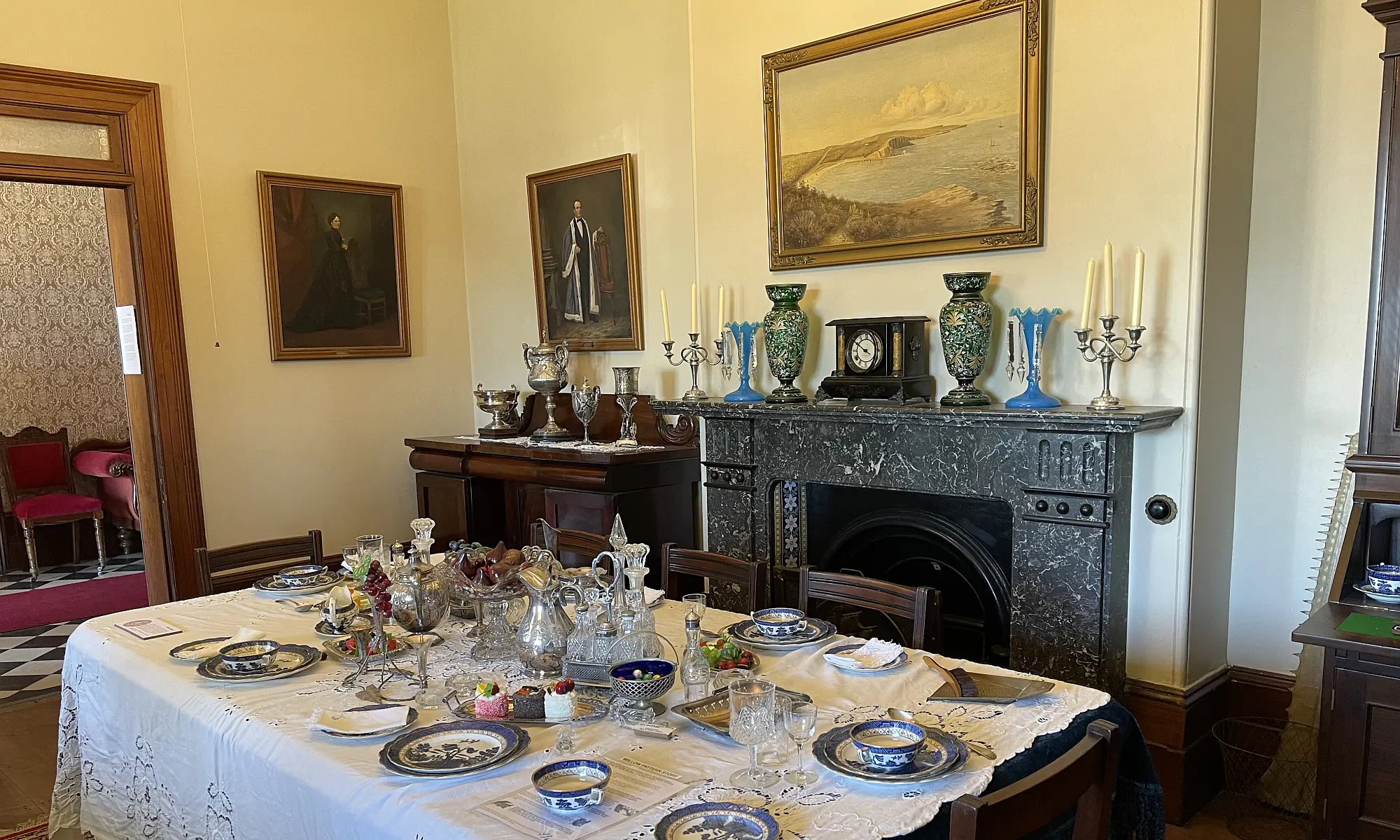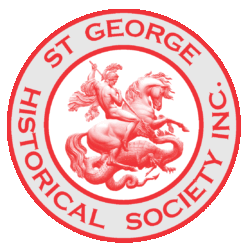The following letter was received by the Secretary in April 1970:
In the Bi-centenary issue of the Leader, reference is made to a whaling master Captain James Birnie who gave up the sea to settle in Sydney about 1890 and in the edition of March 18th mention is made of the whereabouts of his headstone.
I have lived in Bexley for nearly eighty years. In my young days we used to pass through a bushland now occupied by Bexley’s main shopping centre known as Birnie’s Bush. It was bounded by what is now Oriental Street, Forest Road, Kingsland Road and Godwin Street.
Two tracks led from the top of Abercorn Street, one to the left coming out at the top of Oriental Street and the other to the right coming out opposite the present post office.
Beyond Oriental Street, Mrs. Birnie lived in the big house later occupied by Dr. Laverty with the land running back to Godwin Street (only a track in those days). The house was known as Oaklands and two large oaks stood at the gateway. A smithy’s forge was next under another oak tree.
We seldom saw Mrs. Birnie but I understand a relative named Smalley lived in a house afterwards demolished to make Bexley Road.
Do you think this was the same Birnie? I would like to know.
P. S. We came here in 1892.
Yours faithfully,
(Miss) Bessie F. Hill

In reply to the letter from Miss B. F. Hill, published in the June Bulletin of the St George Historical Society, we would like to thank those members who have forwarded information in reference to this article.
In answer to the question, the following comprehensive reply was submitted by Mrs. N. Hutton-Neave.
Birnie And Bexley
With reference to the enquiry by Miss B. F. Hill in the June Gazette concerning Mrs. Birnie of “Oaklands”, there is no connection with Captain James Birnie.
Captain Jas. Birnie arrived at Sydney in his whaler the “Star” in 1802; he returned to England and brought out his wife in 1809 (confirmed by Shipping Register).
The Birnies settled in a “town house” in O’Connell Street, where they lived for about fifteen years. (confirmed Sydney Gazette – various issues).,
James Birnie was granted by “Governor’s Promise” Portion No. 1 of 700 acres at Kurnell (then unnamed) – first described as in the Parish of Holdsworth or Holdsworthy, then “at Botany”. He named this “Alpha” Farm, but the convict clerk never having heard Greek, entered it in the Grants Register as “Half-a-Farm”. The correct name was not legally recorded until the Grant Deeds were issued in 1844: the Title was delayed owing to litigation concerning another part of Birnie’s Estate (confirmed by Grants Register).
Captain Birnie died 1844 and his wife in 1851, and both were buried in the Presbyterian Section of the Devonshire Street (“Sandhills”) Cemetery. When this land was resumed in 1901 for Central Railway these two headstones were removed to Botany Cemetery. (confirmed by Burial Records Mitchell Library).
Captain Birnie and his wife had no children, no next-of-kin in Australia, and no near next-of-kin in England: so that the Mrs. Birnie of “Oaklands” cannot have any connection with Captain Birnie.
Inter alia, “Alpha Farm” was the correct name given by Captain Birnie, as will be seen by advertisements, etc. signed by him, in early contemporary issues of the Sydney Gazette. A “Governor’s Promise” of land was not legally binding and could be rescinded – and occasionally was, for the “Promise” was issued conditionally, e.g. subject to survey, non- alienation for a stated period, and improvements to the land (i.e. development), Thus the name entered in the Grants Register was not recognised legally, but only as a means of identification, and could be altered at any time before the Deeds were granted. (confirmed by Registrar General’s Department, Land Records Section). In regard to this particular grant it is a common error for it to be referred to as “Half-a-Farm”; Cridland in his “Story of Port Hacking Cronulla and Sutherland Shire” 1924, made this error, which like other errors in his book, has unfortunately been perpetuated by unqualified “researchers”; but checking of facts by any experienced historical research student will establish the truth.
These articles were first published in the June 1970 and July 1970 editions of our magazine.
Browse the magazine archive.

